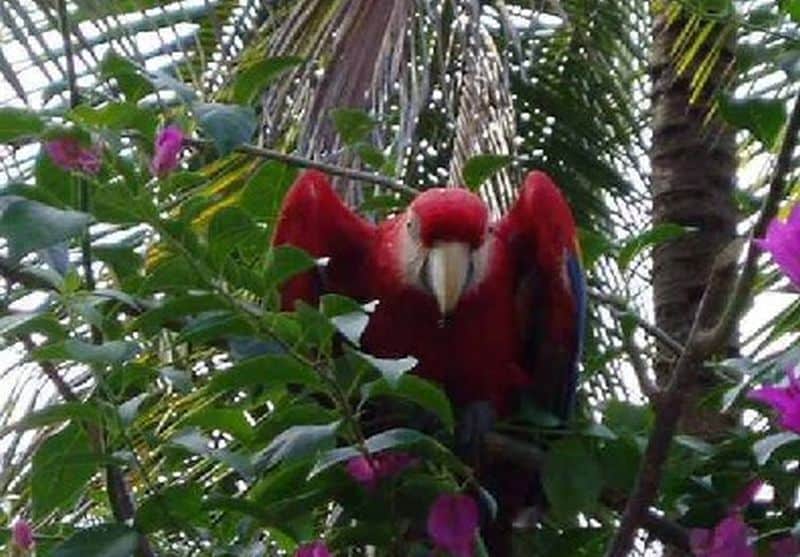The exotic Scarlet Macaw is native to the South American tropical lowlands. Concentrated in the jungles of Guatemala, the Macaws are also found in isolated populations across Central America and in the Amazon basin.
With its vibrant red, blue, and yellow feathers, this beautiful bird has attracted much undesired attention from poachers. Despite the fact that it is illegal to take them from the wild, poachers rob their chicks and sell them for large sums of cash in black market as pets. They are also under threat from settlers and illegal land invaders who destroy their natural habitat to create settlements and at great risk from armed drug traffickers, who regularly clear out hundreds of acres of jungles to build landing strips to smuggle cocaine.
Consequently, with one-third of its jungles destroyed, Guatemala is experiencing a very high rate of deforestation.
WCS employee Rony Garcia said:
They are cutting down all the trees where the macaws nest and obviously taking away territory where they feed and live.
Endangered as they are by unsustainable human activity, the macaws also have low reproductive rates, which increase their risk of extinction. Today, it is estimated that only 300 Scarlet Macawsare remaining in the jungles of Guatemala.
To stem a potentially rapid decline in their numbers a new project hoping to shield these birds is now underway. Using satellite-tracking technology, which has been successfully employed to protect wild creatures including the African elephant and jaguar in their habitats, scientists from the WCS have recently fit two birds with special satellite collars. These collars will allow scientists to track the movement of the parrots in the dense jungles of northern Guatemala and Mexico. The collars will stay on the parrots for a period of nine months and assist scientists to monitor the distances that these migratory wild birds can fly.

Zach Feris of the WCS who leads the project observed:
Before this we were only able to look at scarlet macaws in their nesting habitat. …this technology wasn’t developed enough to withstand life in the wild. Scarlet macaws have very sharp beaks and that could destroy a collar in a second if it’s not properly designed. This new tracking gives us the ability to see the other half of parrot life.
The information obtained will form the basis of proposals that aim to encourage local authorities to expand areas under conservation.
Nevertheless, this work is fraught with danger. Scientists involved in conservation activities in Guatemala have repeatedly received threats from poachers and land grabbers.
The Wildlife Conservation Society (WCS) focuses on creating a better understanding of wildlife by human habitats especially those that border conservation reserves. Aimed at a more sustainable interaction between life forms, they use innovation and education in creating attitudinal changes both globally and locally.
Image Credits: Wikipedia
Read: Reuters


